Clematis virginiana
A beautiful climbing vine loved by bees
Clematis virginiana virginsbower
This native perennial member of the buttercup family has clusters of attractive 1-inch wide white flowers with four sepals - there are no true petals. These flower clusters are borne in the leaf axils. There are separate male and female plants. Male flowers have many stamens while female flowers have sterile stamens and numerous pistils. Male flowers tend to be showier than female flowers. The flowers have no scent.
It blooms from July to September and attracts pollinating insects, especially honeybees. Virgin’s bower is a fast-growing, climbing vine, often trailing over fences and other vegetation. The leaves are divided into 3 sharply-toothed leaflets. The stem is often woody. It lacks tendrils but supports itself with twining leafstalks that wrap around other plants. The vine may be 6-15 feet long.
The plant grows in thickets, wood edges, banks of streams throughout much of eastern and central North America, though the population in the Southeast is spotty. It can be found in all counties of Pennsylvania. In the fall after the female flowers are pollinated, a fruit cluster called "old man’s beard" forms. This consists of a mass of gray silky plumes adhering to the seeds.
Virgin’s bower is a common plant within its range and is sometimes cultivated in gardens. Native Americans used the plant as a medicine, but it should be considered poisonous and should not be eaten. A few susceptible people may develop a mild rash from handling the leaves of this plant. The origin of the name "virgin’s bower" is a bit obscure. It may mean that it was an appropriate flower for the room or chamber of the Virgin Mary or the Virgin Queen Elizabeth of England. In some places, this species is called devil’s darning needles, devil’s hair, love vine, wild hops, and woodbine. Some of these can be confusing since they are also applied to other species. The naturalized alien yam-leaved clematis may be mistaken for virgin’s bower, but the former has 5 leaflets.
Habitat & Range
Common along edges of woods, occasionally edges of wetlands & thickets.
Present throughout the state.
Range: From Quebec to Manitoba, south to Alabama and Louisiana, west to Kansas.
| EMP: | FAC |
|---|---|
| NCNE: | FAC |
Phenology
Flowers late July through early September.
Characteristics
Inflorescence dioecious, cymose-paniculate, growing from leaf axils
Flowers creamy white, in clusters (inflorescences); 4 spreading dull white sepals(petals absent);
Male flowers multiple, spreading stamens, white with creamy tips
Female flowers white styles up to 1.5 inch long
Leaves compound, with 3 or 5 leaflets; leaflets entire or coarsely toothed (serrate), ovate, on long stalks; stalks act as tendrils; 1-4 inch long
Length 6 to 15 feet
Plant Codes
S-rank: S5 (Secure)
G-rank: G5 (Secure)
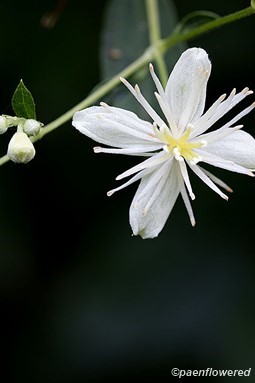
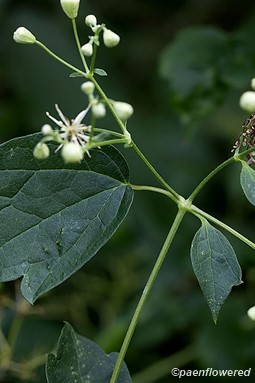
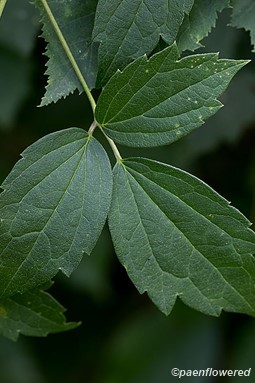
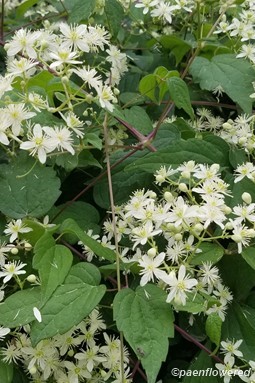
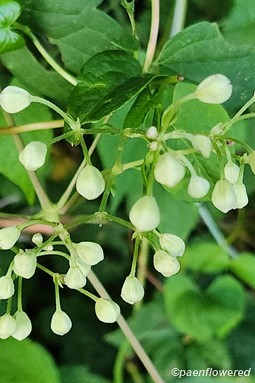
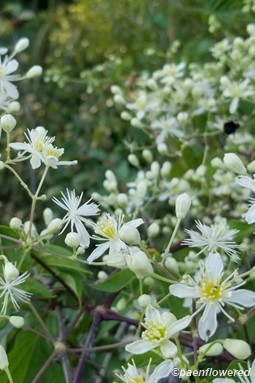
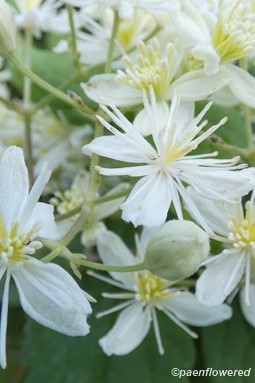
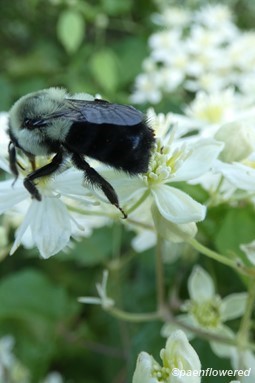
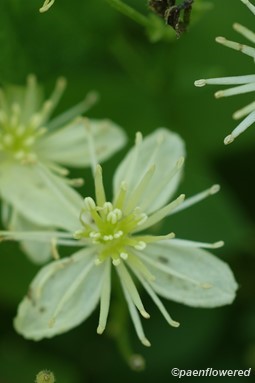
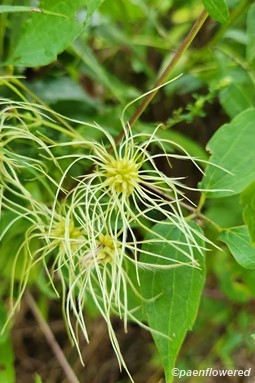
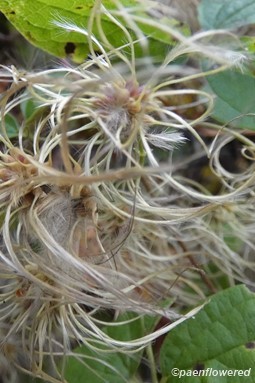
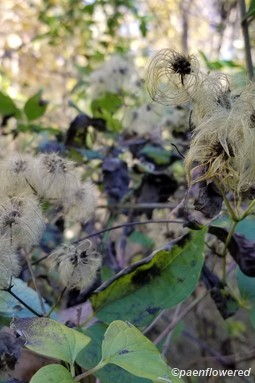


Comments
Have you spotted this plant in your area? We'd love to hear about your experience! Share your comments or questions about the plant below. Comments are moderated before posting.